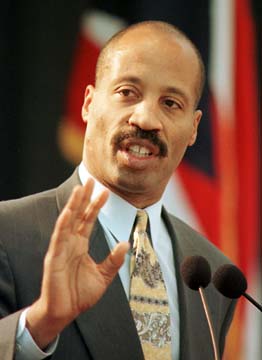
Love Rock and Roll? ‘LOVE, JANIS’ is your thing!
"Some people live, some survive. I'm a survivor. I plan to be around for a long time." Those were the words of legendary rock singer Janis Joplin, whose life story, ‘LOVE, JANIS’ is now on stage at the Hanna Theatre.
As it turned out, Joplin was wrong. She died before her twenty-eighth birthday of an overdose of morphine and heroin.
Noted for her wailing blues sound, Janis Joplin broke the mold of traditionally pretty band singers, so prevalent during the 50s and early 60s, to become one
of the icons of rock music. But in spite of her
fame, she couldn’t overcome her self-destructive instincts
Born Janis Lyn Joplin on January 19, 1943 in Port Arthur, Texas, a small Southern petroleum industry town, she proved early in life to be a rebel. She broke with local social traditions during the tense days of racial integration, standing up for the rights of African Americans whose segregated status in her hometown conflicted with Janis’s youthful ideals.
She, along with fellow beatnik-leaning high school friends, pursued the non-traditional via arts and literature, especially music. She found her voice and was soon playing in coffee houses in the small towns of Texas. After a short stint in college her big break came. Chet Helms, a Lone Star state friend who was living in San Francisco, called to offer her a singing audition with an up-and-coming local group. Janis accepted, went to California and became the lead singer for "Big Brother and the Holding Company.” And, as the saying goes, “the rest is history.”
‘LOVE, JANIS’ was created by Joplin’s sister, Laura, whose goal was to show a side of the legendary singer that her fans may not have known. Through the use of pictures, letters that Janis wrote to her parents, and her songs, we learn of the star’s life. Or, at least the life her sister wants us to see.
The performance piece has an interesting premise. There are two Janises. One, the performer who puts on a face and a voice for the world, and the private Janis who wrote letters which indicated her successes and self doubts. Both Janises appear on stage, sometimes solely, sometimes together. This is accomplished by having two actresses portray the single person. One sings, the other speaks.
The present Cleveland production (in 1999 the Cleveland Play House mounted a very successful version) has two casts. I saw the duo of Katrina Chester as the singing Janis and Helen Coxe as the speaking Janis.
Chester has a big voice. She sings with gusto and lets loose with ease. I, at points, found her voice shrill and the song interpretations to be words rather than meanings, stressing the emotion rather than the meanings. A woman who shared my table at the performance, and who is a Janis fanatic, indicated that Chester, though good, didn’t have the audience-commanding presence of the original star.
I found Helen Coxe, who played the speaking role, unimpressive. She was constantly fiddling with her hair, seemed uncertain on stage and failed to develop a textured character. She simply didn’t display the emotional core of the character. She was missing the inner fire of a woman in chaos.
Local Cleveland favorite, Paul Floriano, is the off-stage voice who questions Janis and makes transitional comments.
On the way into the theatre the usher handed me a pair of ear plugs. She said, “Believe me, honey, you’ll need these.” She was right. Sitting in the first row, immediately in front of a huge speaker, my chair actually vibrated from the base notes. After a while the sound so overshadowed the singing, that I was hearing “boom, boom, boom,” not words. I wish that
bands would realize they are playing backup to the singer and if we can’t hear the lyrics, there is no sense in having a singer.
Capsule Judgment If you love rock and roll, if you are a Janis Joplin fan, you’ll like the concert segments of ‘LOVE, JANIS.’ If you have sensitive ears and aren’t into rock, there are probably shows around town that will be more to your liking.













